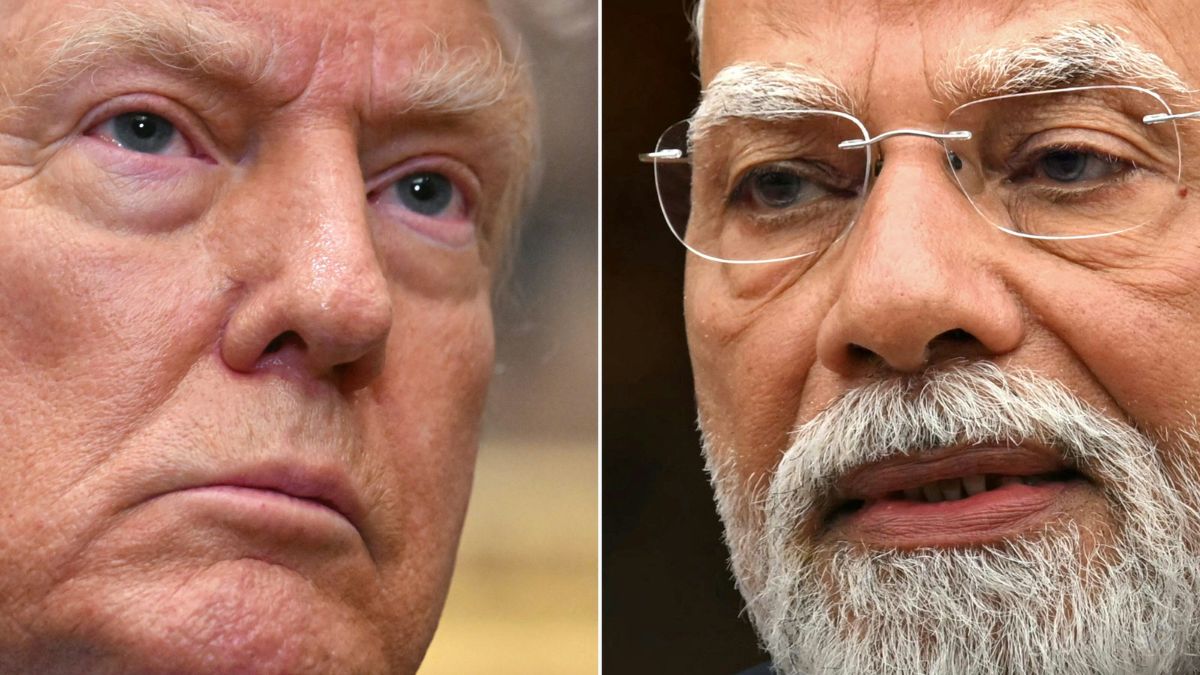New report reveals how India stood up to Trump’s ego: No duty cuts on US dairy, agri imports
 A collage of US President Donald Trump and India Prime Minister Narendra Modi | AFP
A collage of US President Donald Trump and India Prime Minister Narendra Modi | AFP
Just weeks before August began, India was confident in securing a trade deal with the United States. But in the days that ended July, Donald Trump—in his signature irate fashion—announced sweeping 25 per cent tariffs on the world’s fourth largest economy, signalling that any deal between the two nations was dead on arrival. So, what happened?
A REUTERS exclusive gave us the answers. After five rounds of negotiations, India thought the US President himself would announce the deal before August 1. Instead, what came was a shock for New Delhi. Along with the tariffs came “unspecified penalties over oil imports from Russia”.
Instead, Washington pivoted to Japan and the European Union, and even adjusted their deal terms to favour Pakistan, which India accused of bankrolling the latest slew of terrorist attacks on the country.
REUTERS interviewed four Indian government officials and two US government officials who revealed details of the proposed India-US deal and an account of how negotiations fell flat, despite reaching technical agreements on most points.
The exclusive cited that both the Indian side and the US side agreed on the same thing: “a mix of political misjudgment” and “missed signals”.
Back home, India thought that Piyush Goyal’s visit had cemented the deal. US VP J.D. Vance’s recent Delhi visit was the cherry on top. India offered to knock down tariffs to zero on industrial goods—they were 40 per cent of all of US exports to India, REUTERS reported, citing two Indian government officials.
India even looked at slowly cutting tariffs on US automobiles and alcohol, and even entertained Trump’s call for more energy and defence imports from America. But it was farm and dairy imports that broke the camel’s back.
India unlikely to cut duty on farm and dairy imports (ever)
Most of Trump’s voter base comes from republican agricultural bases. The industrialist-turned-president was always going to press for duty-free farm imports and dairy products from the US. But what Washington did not anticipate was that dairy and agriculture farmers were also among the ruling BJP government’s main voter base in the northern part of India. This was a no-go from the start.
In fact, Union Cooperation Minister Amit Shah today announced India’s plan to lift milk procurement by 50 per cent over the next five years under the cooperative-led White Revolution 2.0.
The ruling BJD-led Indian government’s plans are ambitious—to set up 2 lakh multipurpose cooperative societies around dairy. To date, White Revolution 2.0 has given birth to 35,395 new cooperative societies.
Moreover, US agriculture is the froth of capitalism manifested—corporatised to the brim. In contrast, farming in India is a livelihood. Tariffs on cheap US produce essentially protect small farmers and help India manage price volatility and ensure food security.
India, REUTERS reported, believed that the US would understand its reluctance to cut duties on agricultural and dairy imports. Trump pushed. Finally, according to a White House official, “there was never a deal that we felt good about”, the report said.
Apparently, the misguided Americans thought India would back down on the agriculture and dairy tariffs—India was never going to concede.
The report, however, said that India grew overconfident when Trump hinted at the “big” deal with the world’s most populous nation. But did we? The Centre was always clear on dairy and agriculture, both major local industries of the country.
The moment the US inked deals with Japan and the European Union, New Delhi knew that the “big” deal was more of a pipe dream—like most of Trump’s promises throughout his public existence.
The exclusive even cited that India pushed for a lower 15 per cent tariff rate—but Trump’s ego couldn’t take it. He wanted a headline. Indian negotiators wanted what was best for the nation, and the government’s interest. We were not South Korea, which readily offered cuts on rice and beef imports to get tariffs cut to 15 per cent.
The report also went on to cite a major gap in communications—there was no direct line between “dear friends” Prime Minister Narendra Modi and Trump. While REUTERS cited a White House official disputing the need for it, stating other deals went through without such involvement, an Indian official said that Modi could not afford a classic one-sided Trump conversation.
But what really riled up New Delhi, REUTERS said, citing three other Indian officials, was Trump’s insensitive and removed-from-reality remarks about being the one who mediated the peace between India and Pakistan.
REUTERS went on to say that an Indian official even blamed the collapse of the deal on “poor judgment” and that the negotiators did not get the “diplomatic support needed after the US struck better deals with Vietnam, Indonesia, Japan and the EU”. When we removed the Western bias, it became clear that India could not, would not stand down on two things—the Modi government would never lend credibility to Trump’s peace claims, and they would not cut duties on dairy and agriculture imports.
The REUTERS report also mentioned that India was looking to re-negotiate tariffs in the farm and dairy sectors, but multiple statements from government bodies, industry organisations, and market watchers attest to the fact that New Delhi would move on it, inviting the ire of dairy associations and farmers in India.
Business